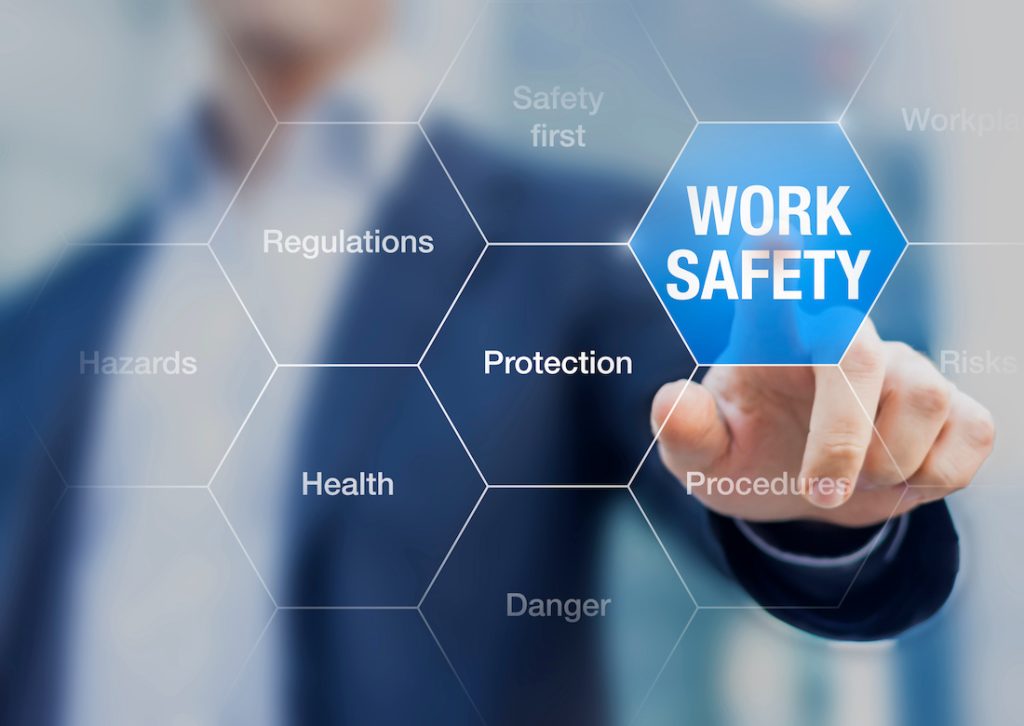One safety strategy more and more companies are taking advantage of is forming a safety committee. This post defines what the committee is, explains state requirements, and lists benefits of having a safety committee.
What is a Safety Committee?
The goal of a safety committee is to bring workers and management together to work cohesively to maintain a safe and healthy workplace.
A successful safety committee requires both employees and management commitment to the same goals. According to OSHA, the most effective safety committees work together to find solutions to prevent workplace accidents, illnesses, and injuries. Naturally, fewer accidents, injuries, and illnesses mean lower workers’ compensation claims costs.
What does the group do? The ideal safety committee designs and implements programs, addresses and solves problems, and acts as an oversight group or team for safety. Through their activities and actions, the message is communicated that employee safety is important and management is firmly committed to protecting workers. The group will also serve to ensure compliance with federal and state health and safety standards and provide workers with an opportunity to discuss health and safety problems and offer possible solutions. The committee helps to identify problems and recommends solutions.
Are Safety Committees Required?
Not all states in the US require that companies form safety committees. However, some states do require a safety committee at some or all workplaces in their jurisdiction.
Six states require high hazard/high risk workplaces to have safety committees. This designation is usually based on high experience modification rate (EMR), high days away restricted and transfer (DART) rate, or high workers’ compensation premiums.
Eight states use the establishment’s size as a criterion for requiring a committee, ranging from 5 or more employees to 25 or more.
SUMMARY OF STATES WITH MANDATES
| State | Safety Committee Requirement |
| Alabama | If requested by employee(s) |
| California | Not required, but employers having a safety committee are considered to be in compliance with the communication requirement of the California IIPP rule |
| Connecticut | Self-insured; > 25 employees or high incident rate |
| Hawaii | The safety plans required for workplaces with ≥ 25 employees must include a safety committee or “a person designated and trained by the employer for the facility’s safety and health program.” |
| Louisiana | Safety plan includes requirements for “designation of employees responsible for safety” and for regular safety meetings. |
| Minnesota | > 25 employees or high incident rate |
| Montana | > 5 employees |
| Nebraska | All |
| Nevada | > 25 employees |
| New Hampshire | > 15 employees |
| New York | Group dividend plans |
| North Carolina | High incident rate; > 10 employees |
| Oregon | >10: committees; ≤10: meetings |
| Tennessee | High incident rate |
| Vermont | High incident rate |
| Washington | > 10 employees |
| West Virginia | High incident rate |
Safety Committee Benefits
Safety committees can play an important role in the safety structure of a company. Some benefits include:
- Reduce accidents, injuries, and illnesses within the agency/department.
- Provide a setting for problem solving
- Give supervisors and managers a resource to use when they are faced with safety problems that they might not have the time or technical expertise to handle effectively.
- Involve more people from all layers of the company in the overall safety and health management of the company.
- Motivate and encourage people to work together and communicate who may not have had reasons to interact before.
- Provide members with a broader base of safety knowledge through rotation of assignments and responsibilities
- Fewer injuries can lead to lower work comp premiums.
Implementing a safety committee into your business is a great way to lower workplace injuries and work comp costs. For tips on how to assemble a successful safety committee, you can always reach out to your agent or contact us at [email protected].

